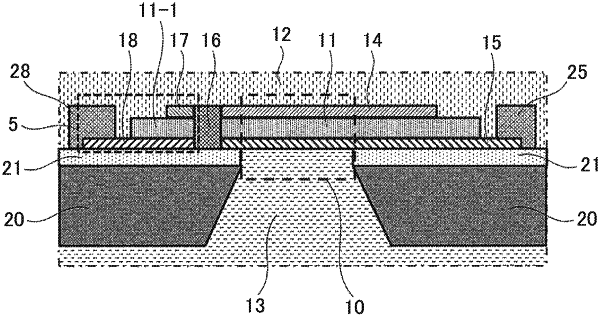| CPC H01M 8/04671 (2013.01) [H01M 8/04552 (2013.01); H01M 8/1226 (2013.01); H01M 8/1286 (2013.01)] | 13 Claims |

|
1. A fuel battery cell comprising:
a support substrate having an opening;
a laminated film arranged on the support substrate;
an insulating member that is arranged on the support substrate at a position where the insulating member does not overlap with the opening and separates the laminated film into a first region and a second region that are electrically insulated, wherein the laminated film includes:
a first electrode arranged on the support substrate,
an electrolyte membrane arranged on the first electrode, wherein the electrolyte membrane has a first portion which overlaps the opening on the support substrate, and a second portion that does not overlap the opening on the support substrate, and
a second electrode arranged on the electrolyte membrane; and
a sealing portion which seals the electrolyte membrane so as not to come into contact with outside air,
wherein the second portion is in contact with the first electrode through a first insulating film and the second portion is in contact with the second electrode through a second insulating film,
and wherein the insulating member separates at least one of the first electrode, the electrolyte membrane, and the second electrode into two electrically insulated regions to thereby electrically insulate between the first region and the second region.
|